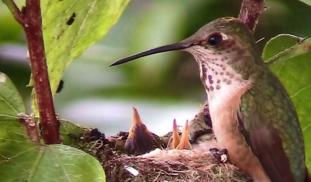305
-1
3
Please wait...
About This Project
Hummingbirds use energy at extremely high rates due to their small size and high metabolism. They must conserve energy by going into nightly torpor, drastically dropping their metabolic rate and body temperature. We aim to quantify the energetics associated with nesting female hummingbirds using thermal imaging. We predict that in order to incubate their eggs well, they will rarely use torpor. This has important implications for understanding how animals cope with extreme energetic requirements.
More Lab Notes From This Project

Browse Other Projects on Experiment
Related Projects
How do polar bears stay healthy on the world's worst diet?
Polar bears survive almost entirely on seal fat. Yet unlike humans who eat high-fat diets, polar bears never...
Uncovering hidden insect diversity associated with a likely undescribed gall-forming midge
Does a likely undescribed species of gall-forming midge (pers. comm. Ray Gagné) on Eriodictyon plants (Yerba...
Macrofungi of the California archipelago
The eight islands of the California Archipelago are a well-studied biodiversity hotspot — but we know almost...




